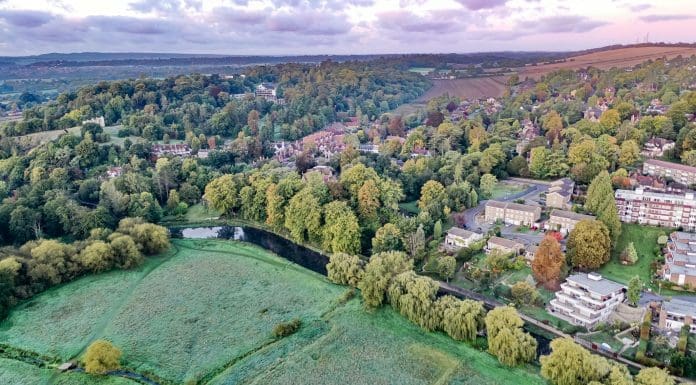New study reveals Guildford’s green belt is most likely to be prioritised for building work after the election, as housebuilding in the area increases by 80%
As population growth and the housing shortage crisis continue, green belt spaces are becoming prime building hotspots. Between 2009 and 2018, nearly 65,000 new homes were approved on green belt land across the UK.
The Conservatives have promised to focus housebuilding in urban areas to protect the green belt, whereas Labour have expressed a willingness to overrule planning refusals in certain areas to ensure new homes are delivered.
The study, collated by plant and cherry picker hire specialists at Herts Tools, analysed the areas with the fastest population growth across the UK over the past 10 years as well as the areas with the most green belt space. The data reveals where in the UK is most likely to be targeted for building work.
22,636 hectares in Guildford was found to be the most likely target
The town’s green belt space of 22,636 hectares could be at risk of building expansion as the area reports that the number of houses built in the area has increased by 80% over the last decade.
The study found that Chorley, Thurrock, Epping Forest and Tandbridge follow Guildford as areas at risk of potential green belt building expansion in the future.
All of the areas have green belts of over 10 thousand hectares and a population increase of at least 7%, leaving them vulnerable to housing development plans.
The latest house building report shows that in the financial year ending March 2022, there were 204,530 house builds completed in the UK. The area with the highest house-building rate over the past 10 years is Maldon, Essex, which has experienced a 1600% increase in homes built. This is followed by areas of the North: Harrogate, Preston, Salford and Clackmannanshire, Scotland.
What is the industry doing to avoid building on greenbelt areas?
Prioritising and redeveloping brownfield sites, and previously developed land areas that may have been contaminated or abandoned.
Focusing more generally on building more sustainable and environmentally-friendly buildings.
Encouraging building upwards rather than expanding wide, for example, building flats and three-storey houses.
Engaging with local communities to better understand their concerns and priorities regarding new development.
Stefano Lobban, director at Herts Tools, says: “Just because there is a green belt that can be built on, it doesn’t necessarily mean that we should. Building on green belts will mean that urban regeneration opportunities are ignored. There is plenty of other land which can be utilised for house building.
“The number of long-term empty homes in England has increased by 4.8% over the past year. We should be regenerating pre-used land and buildings, often left neglected and decaying anyway which will breathe new life into our towns and cities.
“Policy regarding green belt land has always stated that restrictions are in place to prevent development from occurring on the area. Urban sprawl is the biggest threat to climate change and many believe the housing crisis won’t be resolved by releasing land.”
The post Multiple green belt areas at risk of building expansion in the UK appeared first on Planning, Building & Construction Today.


